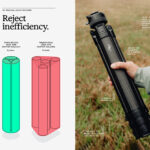
First, let us define what a white balance setting is, and then we will look at how it helps to improve your photographs.
The White Balance function adjusts the color balance of digital cameras to adjust for tints in the surrounding light. For instance, sunlight has a slightly different tint to fluorescent lights, and the midday sun is closer to white than the more yellow early morning sunlight. Most cameras adjust to this automatically by finding an area of white in the image and calibrating to that.
By default, most digital cameras have an auto white balance setting. This just means that the camera will automatically try to determine the type of lighting that is available at the time, and adjust itself accordingly for the picture you are taking. This automatic setting works quite well on some cameras, but not so well with others. Of course, this is not fool-proof. Any number of factors can lead the camera into making mistakes, in which case you will end up with a not so good photograph.
Fortunately, you can control the output pretty well with most digital cameras. It’s simply a case of appreciating your lighting conditions and learning when and how to alter the white balance setting on your camera.
The following are the usual white balance settings found in most digital cameras.
Auto –
As discussed earlier, this is the automatic white balance setting. When your digital camera has its auto white balance set, it will automatically adjust itself depending on the ambient light.

This setting should be used when you are taking pictures in outside locations on days which are either cloudy or overcast. It can also be used during late afternoon in failing light.
Daylight –
Select this white balance setting if you are outside on a bright, sunny day. This setting can also be used indoors if you are using lamps or lights with a daylight-style light bulb.
Tungsten –
This is the setting used indoors. Note that some cameras will label it “incandescent” or “indoors” instead of “tungsten”. Using the usual indoor lamps and overhead lights will cast an orange or yellowish tint to your pictures. Setting your camera’s white balance to Tungsten will tell the camera to adjust for those differences.
Fluorescent –
Use this setting when you are taking photos in places that use fluorescent lights. Fluorescent lights cast a slight blue tint, so the “tungsten” setting will make the skin tones of people in your pictures look much more natural.
Flash –
This is self-explanatory. It is meant to be used when you need to use the flash on your digital camera.
Custom –
You will find a “custom” white balance setting on all DSLR cameras and on some Point and Shoot models as well. The use of this setting is a little more complicated and if you are not fully familiar with it there are tutorials available to show you how it works. You will find more professional tips at www.ExploreDigitalPhotography.com
To be confident that you can choose the right setting in your particular situation, be sure to read your camera manual thoroughly. You will find that some cameras have all of the options above, while others have only a few.
I hope that this information will help you master the white balance setting to produce great-looking pictures.
James Kelso is a digital photography enthusiast. He enjoys covering the more uncommon aspects of this fascinating subject. To learn more useful tips and techniques in all the different aspects of Digital Photography, visit http://ExploreDigitalPhotography.com.
Like This Article?
Don't Miss The Next One!
Join over 100,000 photographers of all experience levels who receive our free photography tips and articles to stay current:






Leave a Reply